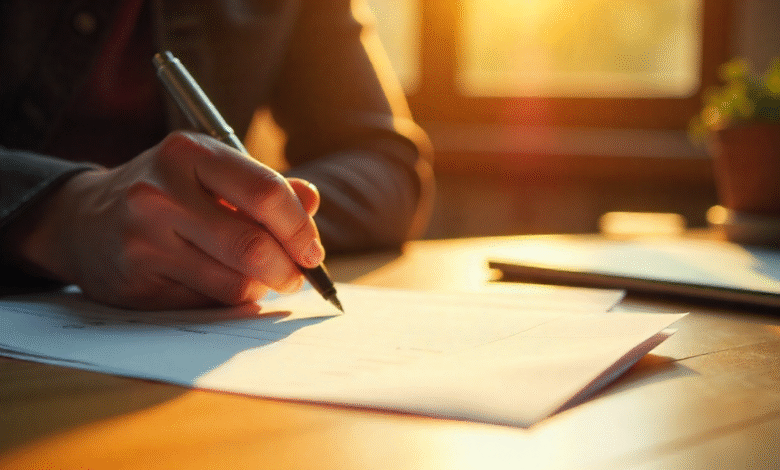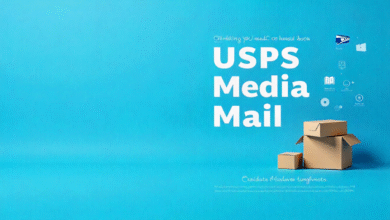How to Write a Check: A Simple Guide for Everyone

How to Write a Check is a useful skill that many people still need today, even in a world full of digital payments. Writing a check may seem old-fashioned, but it is important for paying bills, sending money safely, or giving gifts. If you have never written a check before, don’t worry. This guide will show you step-by-step how to write a check correctly, so you can feel confident using one when needed. Knowing how to write a check can help you avoid mistakes and make sure your payment is clear and accepted.
Learning how to write a check is easy once you understand the parts of a check and what information goes where. A check has spaces for the date, the name of the person or company you are paying, the amount in numbers and words, and your signature. It is important to fill in each part carefully so your check works properly. This guide will also share tips on common mistakes to avoid and how to keep your checks safe from fraud. By the end, you’ll be ready to write checks with no stress and use them for all your payment needs.
What Is a Check and Why Do You Need to Know How to Write a Check
A check is a paper form you use to pay money from your bank account to someone else. Instead of giving cash, you write a check, and the bank sends the money to the person you wrote it for. Even though many people use online payments today, checks are still useful for many things. For example, some landlords want rent paid by check, or you might need to pay a small business that does not accept cards. Learning how to write a check means you can pay anyone safely and correctly without confusion.
Knowing how to write a check also helps you keep track of your money. When you write a check, you can record it in your checkbook or bank app to see how much you have spent. This is helpful to avoid spending too much and to make sure your bank account has enough money when the check is cashed.
Step-by-Step Guide: How to Write a Check Correctly
Writing a check might seem tricky, but if you follow these steps, it becomes very simple:
- Write the Date: At the top right corner of the check, write the current date. You can write it in different formats like “August 11, 2025” or “08/11/2025.” The date helps the bank know when you wrote the check.
- Write the Payee’s Name: On the line that says “Pay to the order of,” write the full name of the person or company you want to pay. Make sure to spell it correctly to avoid any problems.
- Write the Amount in Numbers: In the small box on the right, write the amount of money you want to pay in numbers, like “150.00.” Be clear and write the decimal part (cents) even if it’s zero.
- Write the Amount in Words: On the line below the payee’s name, write the amount in words. For example, “One hundred fifty and 00/100.” This helps the bank know the exact amount if the numbers are unclear.
- Write a Note (Optional): In the bottom left corner, there is a space called “Memo.” You can write a note about what the check is for, like “Rent for August” or “Birthday gift.” This part is optional but useful for your records.
- Sign the Check: On the bottom right line, sign your name exactly as it appears on your bank account. Your signature makes the check valid.
How to Write a Check: Filling Out the Date and Payee Name
Writing the date and payee’s name correctly is the first step in how to write a check. The date should be the day you write the check or the day you want the check to be cashed. Avoid leaving the date blank, because someone could fill in the wrong date.
The payee’s name is very important because the check is like a promise to pay that person or company. Always write their full name or business name clearly. If you don’t know the exact name, ask the person or company before writing the check. Writing “Cash” can let anyone take the money, so use that only if you trust the person receiving the check.
How to Write a Check: Writing the Amount in Numbers and Words
After writing the payee’s name, you need to write the amount in two places: numbers and words. This is to avoid confusion or mistakes. In the small box, write the amount with dollars and cents, for example, “45.75.”
On the line below the payee name, write the same amount in words. For example, “Forty-five and 75/100.” If you forget the cents, write “and 00/100” to show no cents. Writing the amount in words helps the bank if the numbers are hard to read.
Where to Sign the Check and Why Your Signature Matters
Your signature is like a key that unlocks the money in your bank account. Without your signature, the bank will not pay the money. Sign your name on the line at the bottom right corner. Make sure your signature matches the one you gave the bank when you opened your account.
If your signature looks very different, the bank might reject the check or ask you to verify it. Never sign a blank check because someone else can write any amount and cash it.
Common Mistakes to Avoid When Writing a Check
Learning how to write a check also means knowing what mistakes to avoid. Here are some common errors:
- Leaving blank spaces on the check that others can fill in.
- Writing the amount differently in numbers and words.
- Forgetting to sign the check.
- Using unclear handwriting or abbreviations.
- Writing a future date far ahead, which might cause the check to bounce.
- Writing a check without enough money in your account.
How to Write a Check Safely and Protect Yourself from Fraud
Checks can be a target for fraud if not handled carefully. Here are some safety tips when you learn how to write a check:
- Use a pen with blue or black ink so it cannot be erased easily.
- Write clearly and fill out all parts of the check.
- Keep your checkbook in a safe place.
- Record every check you write in your check register.
- Never share your bank account number or check details with strangers.
- If you lose a check, report it to your bank immediately.
How to Record Your Check After Writing It
After writing a check, it is smart to record it. You can use your checkbook register or a bank app to note the check number, date, payee, and amount. This helps you track your spending and avoid overdrawing your account.
Recording your checks also helps you check your bank statements to make sure the right amounts have been paid.
When and Where to Use a Check Instead of Other Payment Methods
Checks are useful when you want to send money securely to someone who may not accept cards or online payments. Some examples include paying rent, gifts, donations, or small businesses. Writing a check also provides a paper trail, so you have proof of payment.
If you do not have internet access or prefer a traditional way, checks are a good choice. However, for everyday shopping, online or card payments might be easier and faster.
How to Write a Check for Different Situations (Bills, Gifts, Donations)
Writing a check can be slightly different depending on the situation. For bills, write the company’s name as the payee and use the memo line for the account number or service month. For gifts, write the person’s name and add a note like “Happy Birthday.” For donations, write the charity’s name and mention the cause in the memo.
Conclusion
Learning how to write a check is an important skill that can help you pay safely and keep good records. Writing a check is easy once you know what information to include and where to write it. Always write clearly, avoid mistakes, and keep your checks safe. Whether paying bills, giving gifts, or making donations, knowing how to write a check gives you more payment options in daily life.
FAQs
Q: Can I write a check without a date?
A: No, always write the date to make the check valid and clear for the bank.
Q: What if I make a mistake on the check?
A: Do not try to fix it by crossing out words. Instead, write a new check to avoid confusion.
Q: Can I use pencil to write a check?
A: No, always use a pen with blue or black ink so it cannot be erased.



